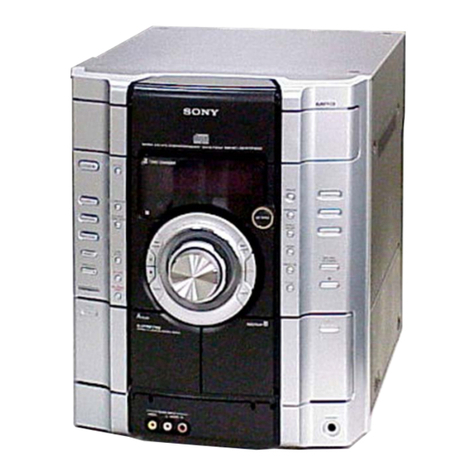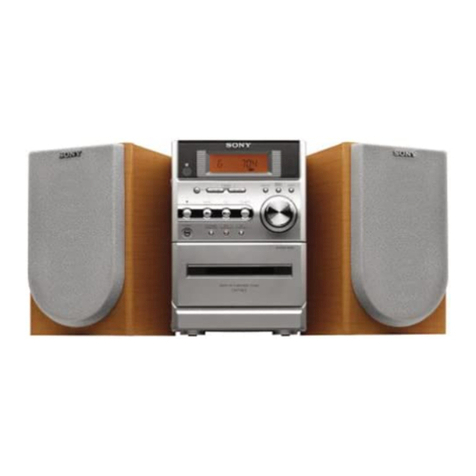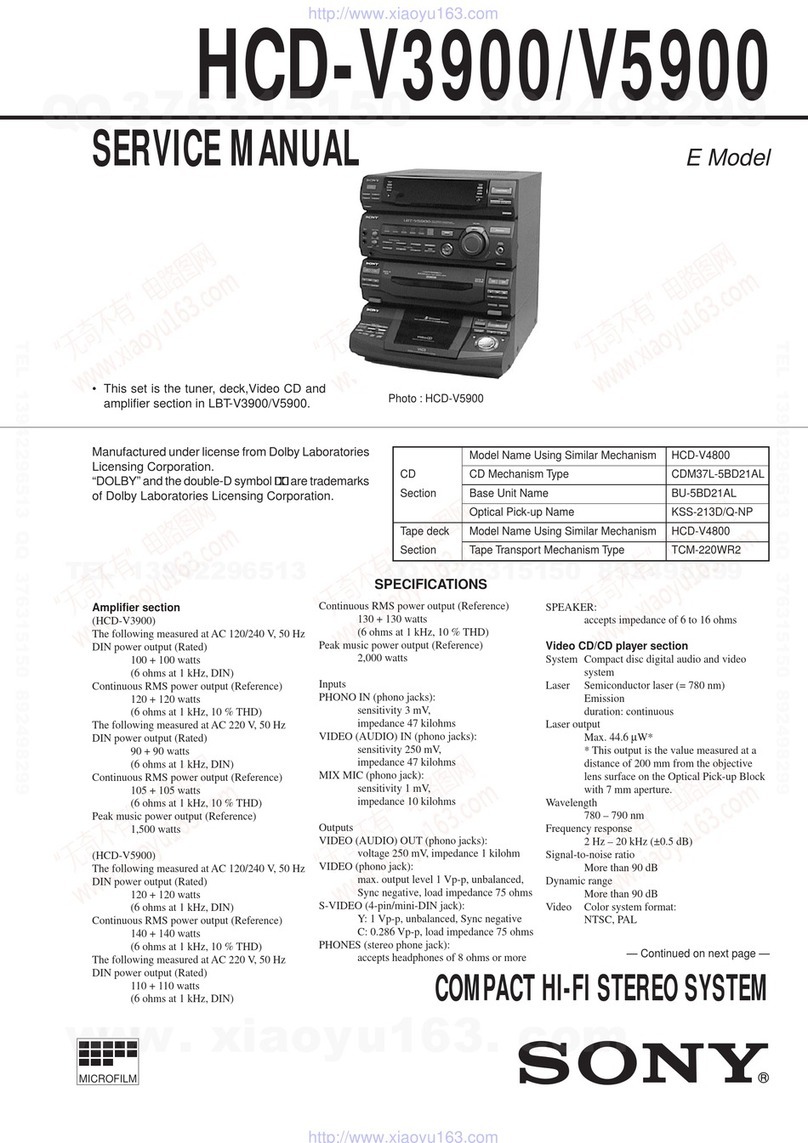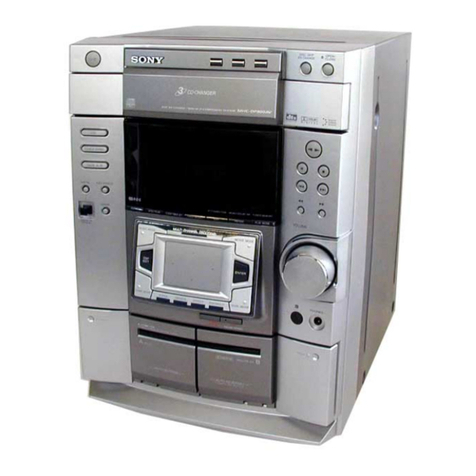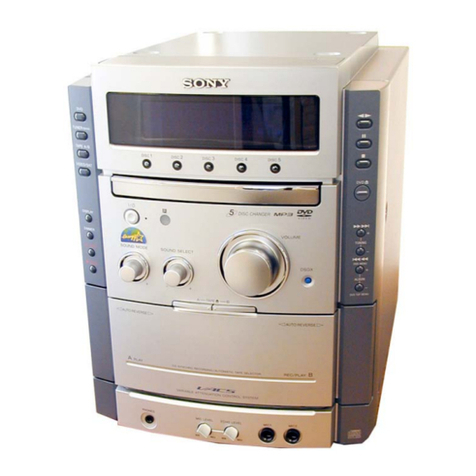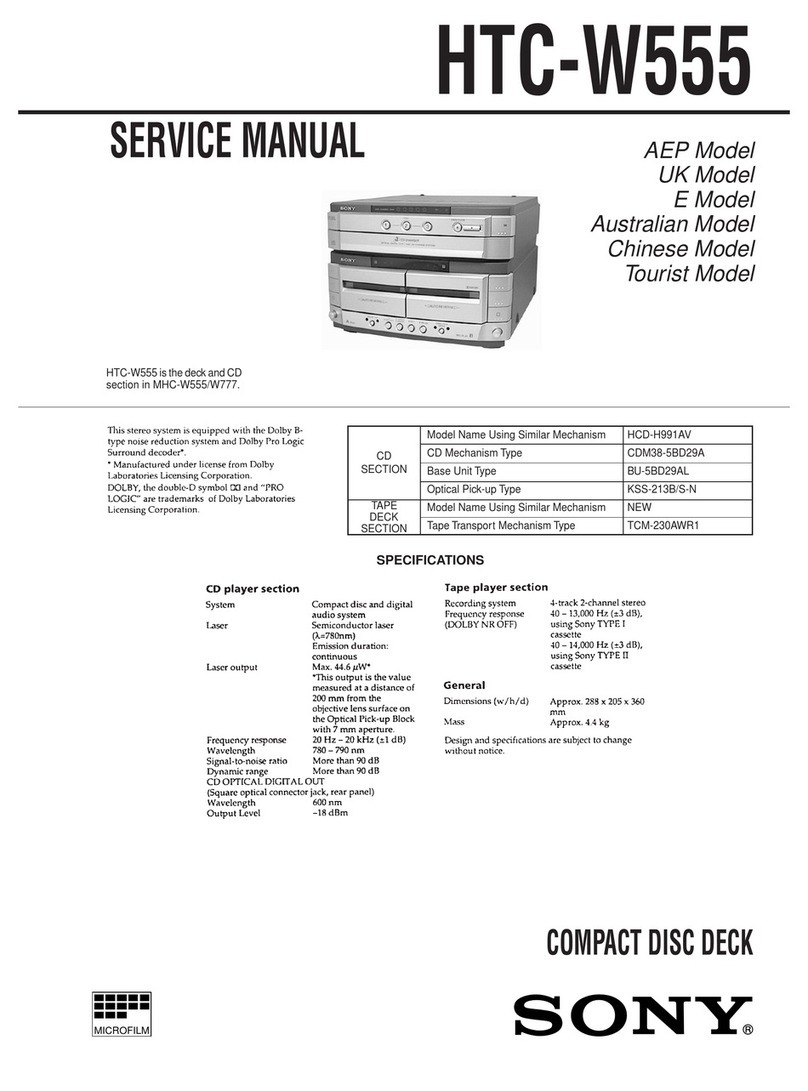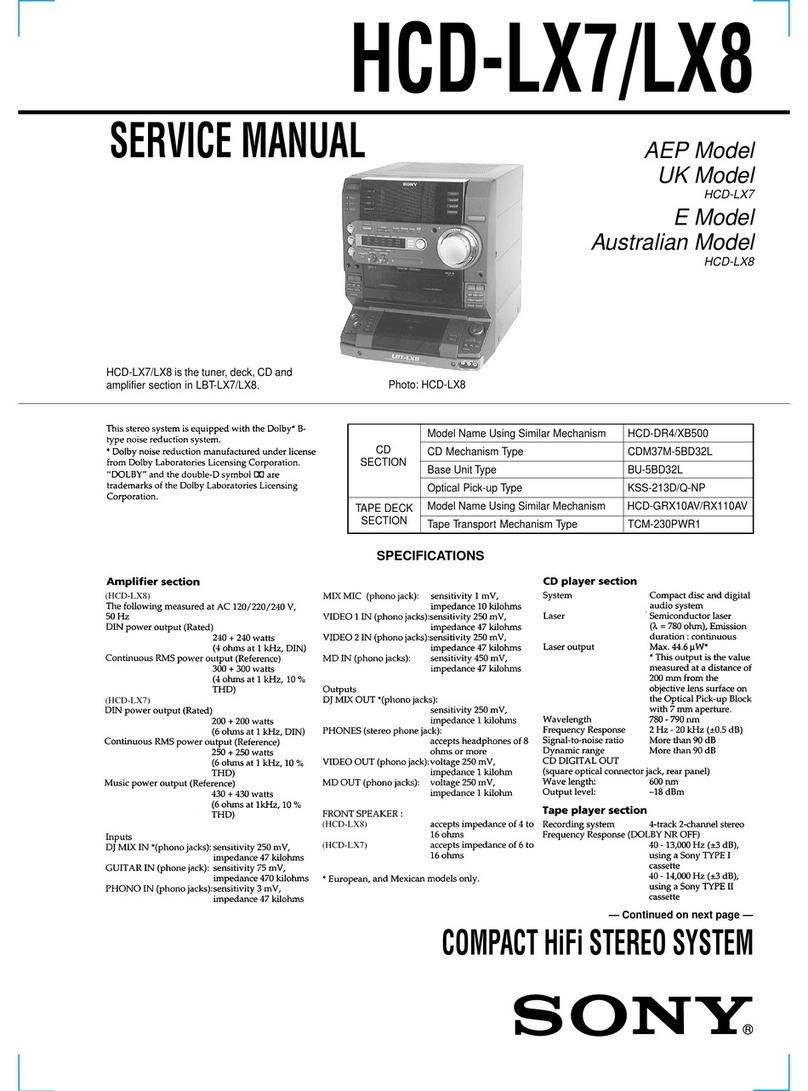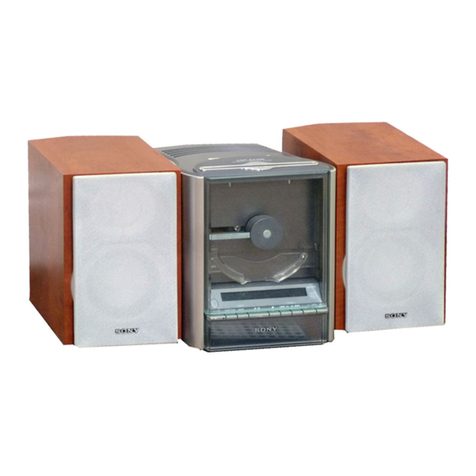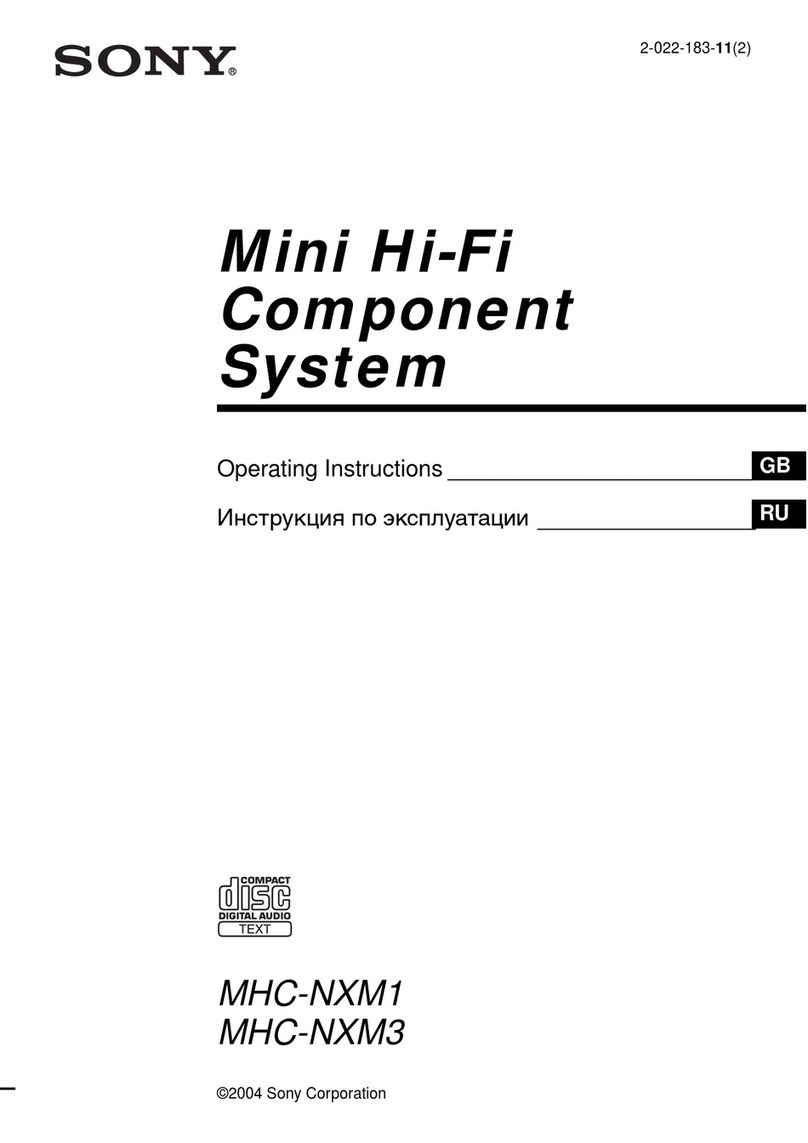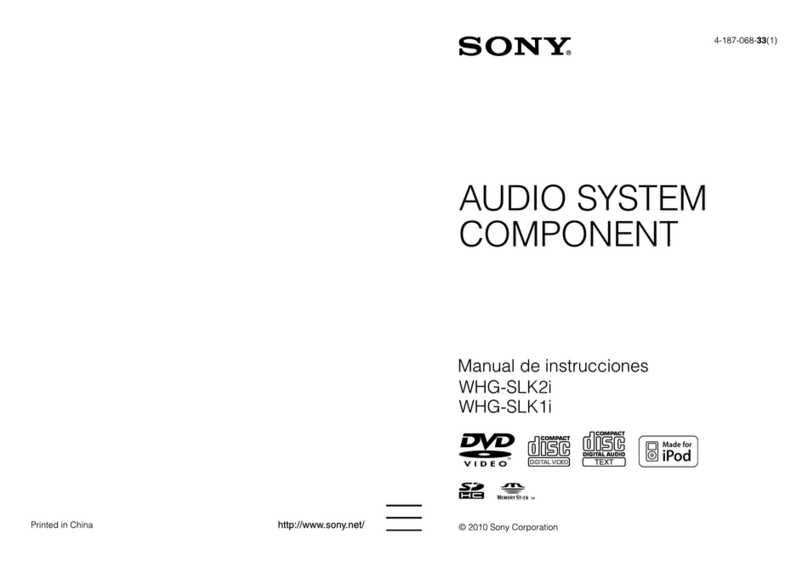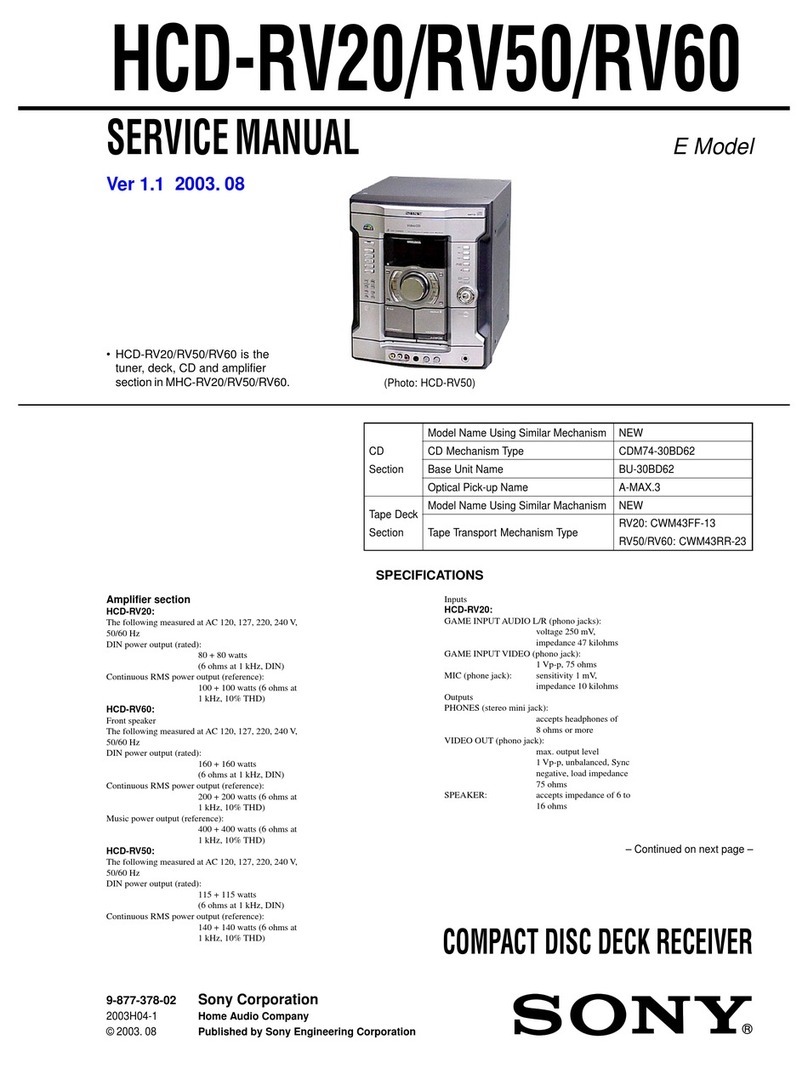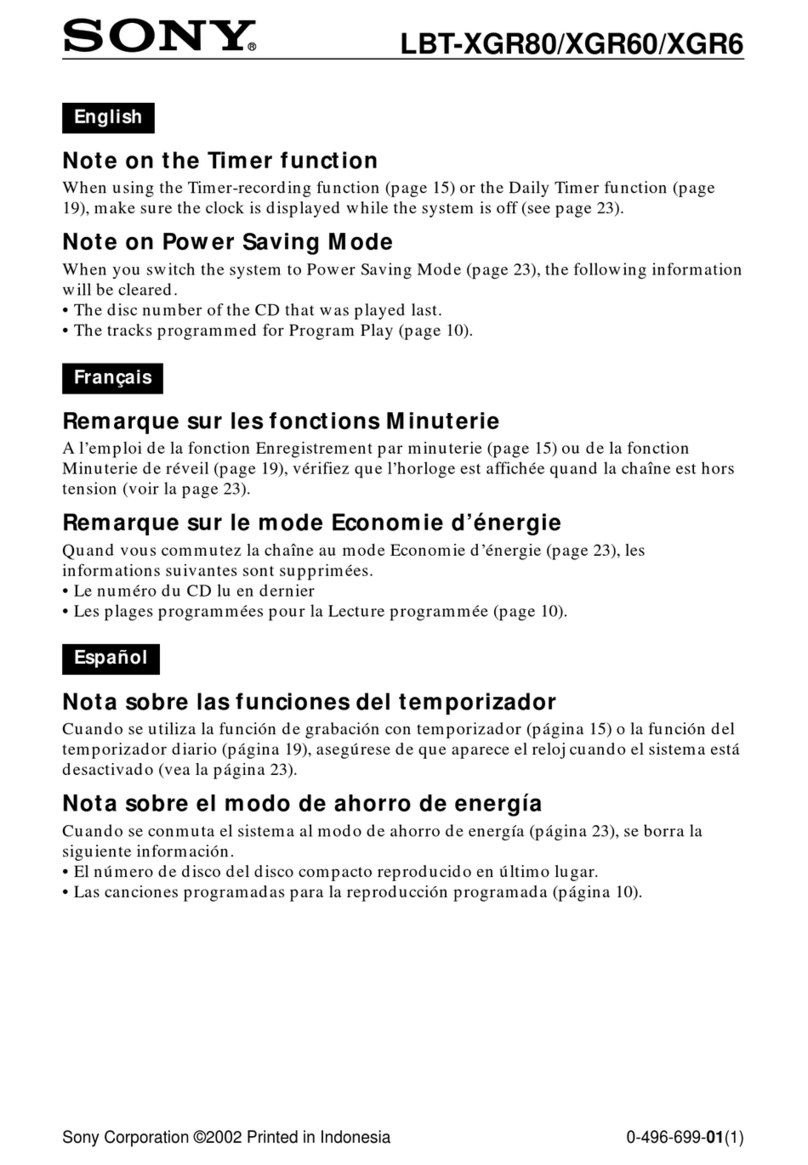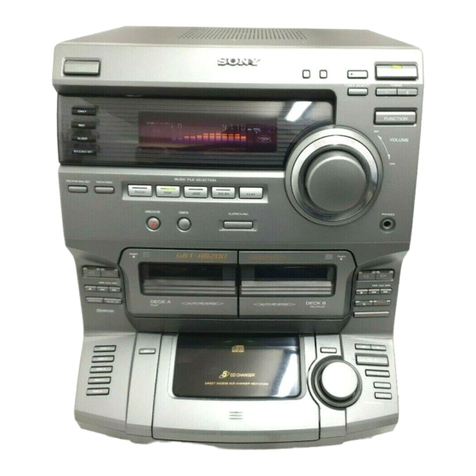— 3 —
TABLE OF CONTENTS
1. GENERAL .......................................................................... 4
2. DISASSEMBLY
2-1. CD Door ............................................................................... 5
2-2. CD Mechanism Deck ............................................................ 5
2-3. Front Panel and Main Board ................................................. 6
2-4. Main Board and H/P Board................................................... 6
2-5. CD Tray ............................................................................... 7
2-6. CD Decoder Board................................................................ 7
2-7. Base Unit ............................................................................. 8
3. MECHANICAL ADJUSTMENTS ................................ 9
4. ELECTRICAL ADJUSTMENTS ................................. 9
5. DIAGRAMS
5-1. Circuit Boards Location ...................................................... 14
5-2. Brock Diagrams
• Tuner Section ................................................................... 15
• CD Section ....................................................................... 17
• Deck Section .................................................................... 19
• Main Section .................................................................... 21
• Power Section .................................................................. 23
5-3. IC Brock Diagrams ............................................................. 25
5-4. Printed Wiring Board —Main Section —........................... 30
5-5. Schematic Diagram — Main Section — ............................ 35
5-6. Schematic Diagram —Panel Section — ............................. 39
5-7. Printed Wiring Board —Panel Section — .......................... 43
5-8. Printed Wiring Board — CD Section —............................. 47
5-9. Schematic Diagram —CD Section — ................................ 51
5-10. IC Pin Function ................................................................ 54
6. EXPLODED VIEWS
6-1. Top and Bottom Cabinet Section ........................................ 56
6-2. Front Panel Section ............................................................. 57
6-3. Cassette Mechanism Deck Section 1 .................................. 58
6-4. Cassette Mechanism Deck Section 2 .................................. 59
6-5. CD Mechanism Deck Section 1 ..........................................60
6-6. CD Mechanism Deck Section 2 ..........................................61
6-7. Base Unit Section (KSM-213BCM) ................................... 62
7. ELECTRICAL PARTS LIST ........................................ 63
To Exposed Metal
Parts on Set
0.15µF 1.5k
Ω
AC
voltmeter
(0.75V)
Earth Ground
SAFETY CHECK-OUT
After correcting the original service problem, perform the follow-
ing safety checks before releasing the set to the customer:
Checktheantenna terminals, metal trim, “metallized” knobs,screws,
and all other exposed metal parts forAC leakage. Check leakage as
described below.
LEAKAGE
The AC leakage from any exposed metal part to earth Ground and
from all exposed metal parts to any exposed metal part having a
returnto chassis, must notexceed 0.5 mA (500microampers).Leak-
age current can be measured by any one of three methods.
1. A commercial leakage tester, such as the Simpson 229 or RCA
WT-540A. Follow the manufacturers’ instructions to use these
instruments.
2. A battery-operated AC milliammeter. The Data Precision 245
digital multimeter is suitable for this job.
3. Measuring the voltage drop across a resistor by means of aVOM
or battery-operatedAC voltmeter. The “limit” indication is 0.75
V, so analog meters must have an accurate low-voltage scale.
The Simpson 250 and Sanwa SH-63Trd are examples of a pas-
sive VOM that is suitable. Nearly all battery operated digital
multimeters that have a 2V AC range are suitable. (See Fig. A)
Fig. A. Using an AC voltmeter to check AC leakage.



